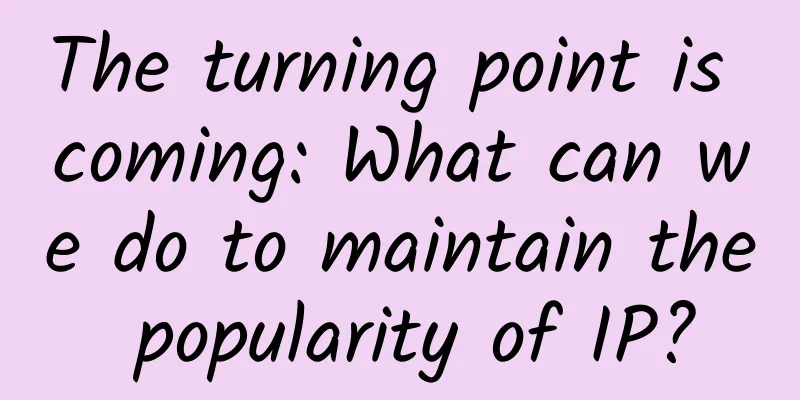The blood-brain barrier, which serves as the brain's "bodyguard", actually prevents the treatment of brain diseases?

|
Produced by: Science Popularization China Author: denovo Producer: China Science Expo What protects the fragile nerve cells in our brain from toxins and pathogens, acting as a "bodyguard" for the normal functioning of the brain, but when the brain is diseased, it becomes an "enemy" that blocks the entry of therapeutic drugs? It is the "blood-brain barrier". Why is the “blood-brain barrier” the “bodyguard” of the brain? The blood-brain barrier refers to the barrier between plasma and brain cells formed by the walls of brain capillaries and glial cells. (Photo source: veer) Simply put, there are tens of billions of neurons in the brain that maintain the normal functioning of the human body. However, these neurons are very fragile and require a very stable and strictly controlled internal environment. The blood-brain barrier is such a protective system between the brain and the blood . Its main task is to block foreign matter (microorganisms, toxins, inflammatory factors and antibodies, etc.) from entering the brain through the blood circulation, so that the brain is as little or even not affected by harmful substances in the peripheral blood as possible, maintain the stability of the internal environment of the brain tissue, and act as a "safety guard" to protect the brain. The history of the discovery of the blood-brain barrier dates back to 1885, when German scientist Paul Ehrlich accidentally discovered that when a dye called trypan blue was injected intravenously, all the tissues and organs of mice turned blue, except for the brain and spinal cord. At that time, he simply attributed it to the brain's insufficient absorption capacity. Paul Ehrlich (Image source: Wikipedia) In 1913, his student Edwin Goldmann conducted another experiment, injecting dye directly into the cerebrospinal fluid of the animal brain, and found that only the brain tissue was stained, while the rest of the body did not change color, thus proving that there is indeed a physiological barrier between the brain and other tissues. It wasn't until the 1960s that researchers formally confirmed the physical structure of the blood-brain barrier with the help of electron microscopy. Figure (i) shows the blood-brain barrier formed by tight junctions between brain vascular endothelial cells (Image source: Wikipedia) The blood-brain barrier is mainly composed of capillary endothelial cells, endothelial cell tight junctions, astrocytes, glial cells and basement membrane, among which capillary endothelial cells and tight junctions between endothelial cells are the basic structure of the blood-brain barrier. The reason why the blood-brain barrier prevents substances from easily entering the brain tissue is mainly due to the role played by capillary endothelial cells. Unlike endothelial cells in peripheral tissues and organs, capillary endothelial cells in the brain have continuous tight junctions, low pinocytosis activity, and no openings. They are also surrounded by basement membranes, extracellular matrix, peripheral cells, and astrocyte foot processes, which further regulate their permeability. The ends of astrocyte processes swell to form foot plates, covering 90% of the surface area of endothelial cells, and can release chemical factors and signals to participate in regulating the permeability of capillary endothelial cells in the brain, that is, the blood-brain barrier. Endothelial cells are the barrier between blood and brain cells (smooth muscle cells). The ends of astrocytes swell to form footplates, which can regulate the osmotic pressure of the blood-brain barrier. (Image source: Wikipedia) Blood-brain barrier: Being a bodyguard requires due diligence As the most complex and important organ in the human body, the brain requires a strict and stable internal environment to maintain normal functioning. The blood-brain barrier plays the role of a "gatekeeper" in this process and is a highly selective physiological barrier between the blood and the central nervous system. Under normal physiological conditions, the blood-brain barrier only allows gas molecules and fat-soluble small molecules with a relative molecular mass of less than 400 to 600 to pass through. Currently known mechanisms of transport across the blood-brain barrier mainly include the following: (1) Water-soluble small molecules and other nutrients necessary for life activities, such as amino acids and glucose, cross the blood-brain barrier through transport receptors; (2) Peptides or proteins can be transported across the blood-brain barrier via adsorption-mediated transport, receptor-mediated transport, or carrier-mediated transport; (3) Small molecular weight, fat-soluble substances can be transported across the blood-brain barrier into the brain via passive diffusion. In addition to these substances, the blood-brain barrier strictly controls the entry of other substances, protecting the brain from damage by disease-inducing pathogens, toxins, drugs and other harmful foreign substances in the blood. It can also selectively pump out harmful or excess substances in the brain, thereby maintaining the stability of the brain's internal environment, enabling the central nervous system to perform its functions effectively and protecting the safety of brain tissue to the greatest extent possible. (Photo source: veer) Studies have shown that the neuroprotection promoted by the blood-brain barrier is essential for the health and function of the brain. The existence of the blood-brain barrier strengthens the homeostasis of brain cells, improves the resistance of brain tissue to changes in the external environment, and enhances the body's adaptability. Antibiotics such as penicillin have a corrosive effect on brain tissue, and the blood-brain barrier prevents such drugs from entering the brain, thereby preserving the structure and function of the brain. The integrity of the blood-brain barrier structure and function is closely related to the progression of a variety of neurological diseases. Disturbance of the blood-brain barrier can lead to serious neurological diseases, including multiple sclerosis, infection, and ischemia caused by insufficient blood supply. If the blood-brain barrier is damaged, some harmful substances that were originally unable to enter the brain will enter the brain, causing damage to the brain and possibly causing disease. For example, multiple sclerosis is an inflammatory autoimmune disease of the central nervous system, and T cells play an important role in the inflammatory response of multiple sclerosis. Normally, the central nervous system is protected by the blood-brain barrier. Once this barrier is damaged, T cells will enter the central nervous system and attack the myelin sheath as a foreign body. When myelin is attacked, it will induce an immune response, causing immune cells to release cytokines and antibodies, expanding the inflammatory response. The continued expansion of the inflammatory response may lead to the collapse of the blood-brain barrier, and then a series of nerve damage phenomena will occur, leading to myelin damage and neurons gradually losing their function permanently. Patients generally experience blurred vision, limb weakness, pain, difficulty urinating, unsteady walking and fatigue, until they become paralyzed and unable to walk. Myelin sheath (Image source: Wikipedia) Being responsible is really responsible, but being a hindrance is really a hindrance The blood-brain barrier is an important self-protection mechanism of the human brain, but it also prevents many chemical drugs used for treatment and diagnosis from being delivered to the central nervous system. Most brain diseases, from rare but fatal diseases such as primary brain tumors to major public health problems such as brain metastases, multiple sclerosis, stroke, Parkinson's disease or Alzheimer's disease, have always lacked effective treatments, posing a serious threat to human life and health. Therefore, how to penetrate the blood-brain barrier and deliver diagnostic or therapeutic compounds to the brain is recognized as the main technical obstacle in the treatment of neurological diseases. (Photo source: veer) Basically all macromolecular drugs, including peptides, recombinant proteins, monoclonal antibodies, drugs based on RNA interference technology, and drugs related to gene therapy, cannot cross the blood-brain barrier, and more than 98% of small molecule drugs cannot cross the blood-brain barrier. There are more than 7,000 drugs in the Comprehensive Medicinal Chemistry database, of which only 5% are used to treat central nervous system diseases, and these therapeutic drugs are limited to the treatment of depression, schizophrenia, insomnia and other diseases, which greatly hinders the development of drug therapy and immunotherapy for brain diseases. In recent years, through continuous efforts, scientists have developed a variety of new methods that can cross the blood-brain barrier to treat brain diseases: (1) Implantable ultrasound device helps chemotherapy drugs pass through the blood-brain barrier and reach tumors The working principle of this ultrasound device is that the device is implanted in the patient's skull. After the device is turned on, the ultrasound will cause the microbubbles to vibrate, which can temporarily open the blood-brain barrier, thereby helping chemotherapy drugs reach the tumor site. The patient needs to turn on the ultrasound device before each chemotherapy. Two minutes of low-intensity ultrasound is enough to open the blood-brain barrier for about 6 hours, and then the patient is injected with the chemotherapy drug carboplatin. (2) Antibodies/antibody fragments help macromolecules break through the blood-brain barrier Carboplatin is a drug used to treat various cancers. However, it cannot freely penetrate the blood-brain barrier and its concentration in brain tumors is very low, resulting in poor treatment effects. Studies have found that after using ultrasound to open the blood-brain barrier, the concentration of carboplatin reaching brain tumors can increase by 5 to 7 times. Some specific macromolecules can be transported into the brain by binding to specific receptors on the blood-brain barrier. This discovery has inspired scientists - if some antibodies/antibody fragments are connected to macromolecules with therapeutic potential, and these antibodies/antibody fragments happen to bind to specific receptors on the blood-brain barrier, can these macromolecules be delivered into the brain? The scientists used the Fc fragments of antibodies and continuously induced them to mutate until they could bind to the "transferrin receptor" on the blood-brain barrier. They then linked the Fab fragments targeting BACE1 to the Fc fragments for testing and found that in mice and monkeys, these newly designed fusion proteins could effectively break through the blood-brain barrier and reduce the levels of β-amyloid protein in the brains of these animals. (3) Nanocarriers help macromolecules break through the blood-brain barrier The "nano effect" caused by the small size of nanocarriers allows them to be internalized into most cells (including brain capillary endothelial cells) through normal endocytosis, and therefore they are widely used in the research of the treatment of various brain diseases. Common nanocarriers include nanoparticles, liposomes and micelles, and drugs can be dissolved, embedded, adsorbed, encapsulated or covalently linked to nanomaterials. Recently, Chinese scientists designed and developed an engineered exosome that can carry chemotherapy drugs to penetrate the blood-brain barrier and simultaneously target the endothelial cell surface of the blood-brain barrier and glioma cells in the brain. Conclusion The blood-brain barrier is the most loyal "guardian" of the brain, but when the brain is unfortunately diseased, it becomes a tough "stumbling block" that hinders treatment. I believe that with the development of science and technology, the research on the blood-brain barrier will be more in-depth in the future, bringing new hope for solving brain diseases and protecting life and health. References 【1】Daneman R, Prat A. The blood-brain barrier. Cold Spring Harb Perspect Biol. 2015 Jan 5;7(1):a020412. 【2】Andreone, Benjamin J., Baptiste Lacoste, and Chenghua Gu. “Neuronal and Vascular Interactions.” Annual Review of Neuroscience 38 (July 8, 2015): 25–46. 【3】Compston A, Coles A. Multiple sclerosis. Lancet. October 2008, 372 (9648): 1502–17. 【4】AgrawalM, Ajazuddin, TripathiDK, et al. Recent advancements in liposomes targeting strategies to cross blood-brain barrier (BBB) for the treatment of Alzheimer′s disease[J]. J Control Release, 2017, 260:61-77. 【5】Pardridge W M. Blood-brain barrier drug targeting: the future of brain drug development[J]. Mol Interv, 2003, 3(2):90-105. 【6】Wolburg H, Lippoldt A. Tight junctions of the blood-brain barrier: development, composition and regulation [J]. Vascul Pharmacol, 2002, 38(6): 323-337. 【7】A. Carpentier, M. Canney, A. Vignot, V. Reina, K. Beccaria, C. Horodyckid, C. Karachi, D. Leclercq, C. Lafon, J.-Y. Chapelon, et al., Clinical trial of blood-brain barrier disruption by pulsed ultrasound, Sci. Transl. Med. 8 (343) (2016) 343. 【8】Boyé, K., Geraldo, LH, Furtado, J. et al. Endothelial Unc5B controls blood-brain barrier integrity. Nat Commun 13, 1169 (2022). 【9】Mihalis S. Kariolis et al., Brain delivery of therapeutic proteins using an Fc fragment blood-brain barrier transport vehicle in mice and monkeys, Sci. Transl. Med. 12 (2020) 【10】Furtado, D., Bjornmalm, M. Ayton, S. et al. Overcoming the Blood-Brain Barrier: The Role of Nanomaterials in Treating Neurological Diseases. Adv. Mater. 2018,30 (46). (Note: Latin text should be italicized.) |
Recommend
From curled grass to acanthus: How do these rich patterns connect Chinese and foreign civilizations?
Western scroll grass decoration is acanthus patte...
How to invest in Tik Tok’s huge Qianchuan?
Douyin's Juliang Qianchuan is an e-commerce a...
Payment system design: How does Yingke guide users to pay for the anchors step by step?
Two days ago, Fu Yuanhui made her first live broa...
Example explanation: B-side TV advertising
Based on his actual work experience, the author o...
A magical tool for picking up girls, creating Christmas snowflake special effects, additional online hot fixes
I believe that those who opened Taobao on their m...
Fed up with Windows? Eight reasons to choose LXDE as your Linux desktop
At the end of last year, I upgraded to Fedora 25, ...
Learning programming in kindergarten - are Chinese parents crazy?
[[156670]] Wu Pei started teaching her 6-year-old...
An article to understand the communication between Android and Flutter
As a cross-platform solution, Flutter is often em...
Search engine promotion guide for the logistics industry!
Today, I would like to discuss with you the promo...
Sharp's return to China lets Xiaomi MIX know what black technology is
August 8, 2017 is a magical day. On this day, VAI...
What! You may not be suitable for sleeping like this? Come and "claim" the sleeping position that suits you best
The quality of sleep affects a person's physi...
The VR concept is very hot. What do investors and practitioners think about it?
VR has been very popular recently. In addition to...
Cook’s iPhone moment has not come yet!
Click to participate in the 51CTO website content...









